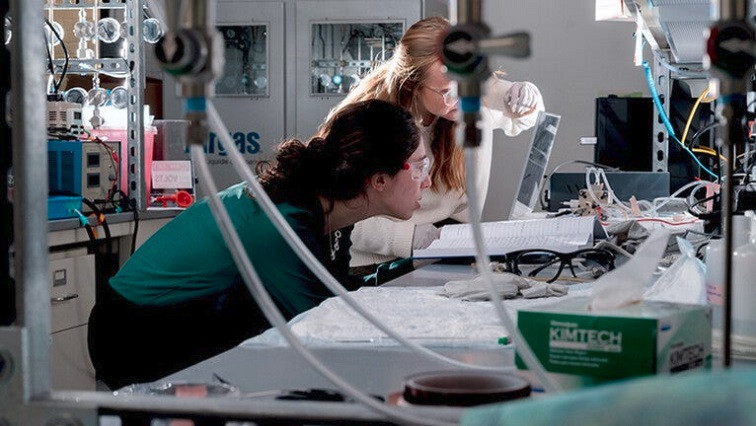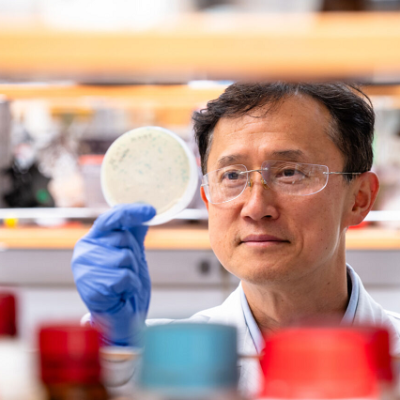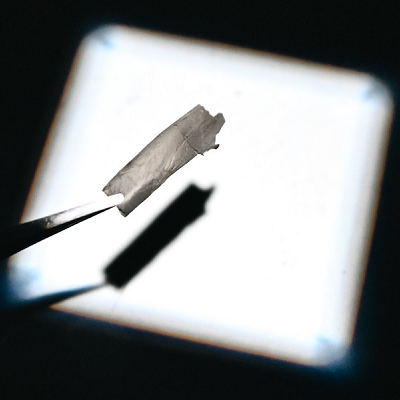Lea Winter, assistant professor of chemical & environmental engineering, proposes the use of electrified membranes made with carbon
nanotubes as a strategy for nitrate removal in drinking water. The results are published in Nature Water.
As Winter points out, there are typically two ways of removing nitrate from water: separating it and destroying it.
“If you're just separating the nitrate, then you end up with a concentrated waste stream that inevitably goes back to the environment and back into the drinking water,” she said. “So it's much better if you can destroy it.”
Classic destruction techniques involve biological denitrification that are typically used in wastewater treatment plants. The problem, though, is that the processes are sensitive, and even a slight change in things like the pH balance, cell content, or temperature could cause the whole process to break down. And because you’re depending on microbes to do the nitrate destruction, the process can be pretty slow.
To get around those obstacles, scientists developed electrocatalytic processes. “It's a lot faster, and it also accomplishes destruction of nitrate so that you don't end up with that concentrated waste stream.”
But Winter notes that, while these technologies allow for more control over the process, they also have their drawbacks. Classical electrochemical processes involve the use of two-dimensional flat plate electrodes.
“You just can't get nitrate from your solution to your electrodes fast enough to be able to efficiently react the nitrate at that electrode surface,” she said.
Winter’s lab has gotten around this by using electrified membranes, made of carbon nanotubes and a polymer that holds them together.
“We're flowing through the electrode in these systems, but the key here is not just that we have pores and we're flowing through them, but that the sizes of those pores are really small.”
In the conventional two-dimensional systems, the layer of fluid closest to the surface of the electrode - the “boundary layer” - is about 100 micrometers. This relatively large boundary layer can limit the reaction because the fluid flow, and therefore transport of nitrate through that layer, is much slower than the reaction rate itself. The membranes developed in Winter’s lab feature pore sizes of about 50 nanometers, or about 2,000 times smaller. That means there’s a much smaller “slow” space through which the nitrate has to move before getting to the electrode surface and undergoing reaction.
“So in this configuration, we're able to overcome these diffusion limitations, and we start to see some pretty interesting properties.”
Unlike most electrochemical systems, which require metals to achieve sufficient nitrate conversion, Winter’s membranes contain no metal. Because they overcome the diffusion limitations, the membranes - using carbon nanotubes as the catalysts - can achieve a nitrate conversion comparable to that of metal catalysts.
One big difference between this technique and conventional electrochemical process is that it dramatically reduces the time it takes to destroy the nitrate.
“Looking at conventional electrochemical processes, it usually takes on the order of hours if you want to get 80% or 90% removal of that nitrate,” she said. “You need to give a long time to react because it takes so long to get all that nitrate to your surfaces. In our systems, we get similar conversion around 80% in 15 seconds through our reactor. We're going from the order of hours down to 15 seconds.”
To test the technology in a real-world application, Winter’s research team sampled some water from Lake Wintergreen, near the Yale campus, and added a small amount of nitrate.
“It's actually much easier to convert higher concentrations, so we specifically wanted to see if this is going to work on lower concentrations that are representative of what you see in real contaminated waters,” she said. “We took that concentration, and then we were able to remove the nitrate to below the EPA standard for drinking water.”
Read the original article on Yale University.







